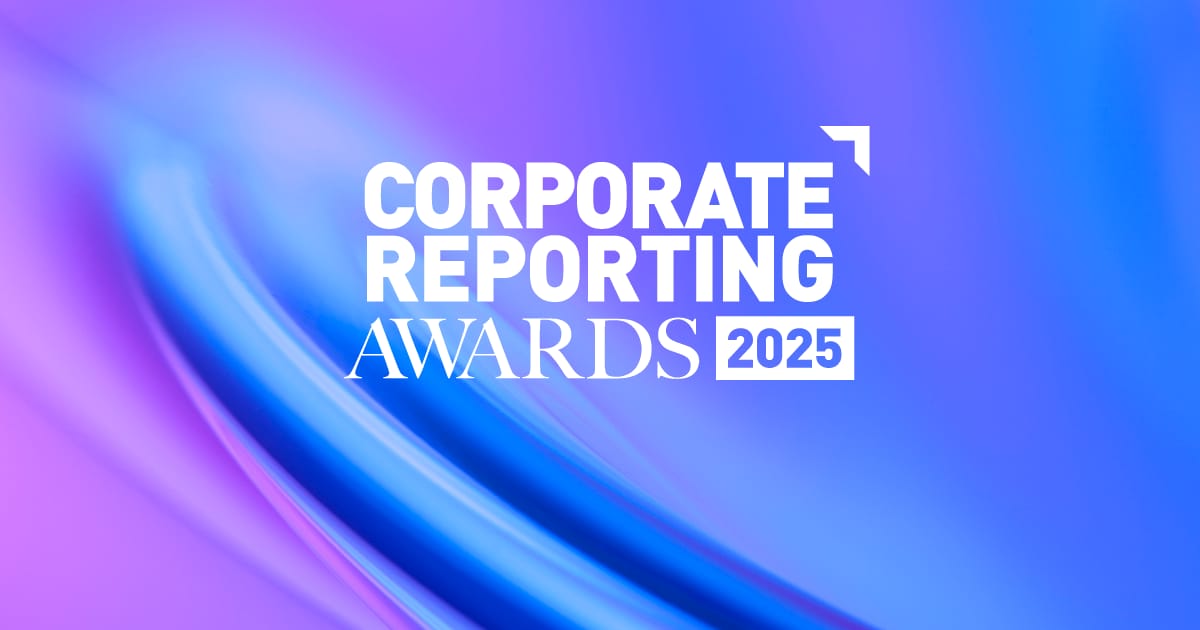- Corporate Affairs Unpacked
- Posts
- A new adventure
A new adventure
Introducing a weekly newsletter for communications professionals

Hello and welcome to the first issue of Corporate Affairs Unpacked, brought to your in-box by me, Helen Dunne, formerly of the parish of CorpComms.
Confused? Don’t be.
I’ve shuttered CorpComms to launch Corporate Affairs Unpacked, a weekly newsletter designed to entertain, prompt ideas, catalyse thinking and share best practice to help communicators in their roles.
It will unpack the issues that concern the industry, which could be geopolitics, stakeholder management or good old fashioned media relations.
In fact, it laughingly promises to demystify the corporate affairs function – so no pressure there!
The newsletter will also serve as the foundation stone of a new business model that puts networking centre stage, creating a membership community which is something in-house people (and agency folk) say they would welcome. There will be a fee, sadly, but it starts at just £10 per month! (Or £100 per year.)
For the avoidance of doubt, the CorpComms Awards and Corporate Reporting Awards are alive and well and open for entries. I’m also in the planning stages for this year’s Corporate Affairs Summit, open exclusively to senior in-house communicators, which this year takes place on 8 October. To reserve your space, click here. And any ideas for themes/topics, simply email [email protected].
I will endeavour to deliver this tome with a dash of humour every Friday by noon. This is a work-in-progress. Who knows where it will end? But I need to get out of my head, stop procrastinating and press send!
Onwards and upwards.
The case of the missing chair
It’s a mystery worthy of Hercule Poirot.

Why is the corporate affairs seat disappearing from the executive table?
By my count, just one in three FTSE 100 companies today has corporate affairs on its executive team.
But consultants Hedley May reckon the number could be as low as one in four, attributing the discrepancy to those exec members who have responsibility for the function but no on-the-job experience.
Was it only three years ago that the CIPR expressed its horror that just 52 had a communications professional on their executive teams? The others, it declared without a hint of hyperbole, were playing ‘reputational roulette’.
Blimey, on that basis, it seems the Footsie is on a team junket to Vegas.
Just five years after the pandemic established communications at the heart of every organisation, with previously shut doors being thrown open like a locksmith on speed, it seems that there’s been a bit of a rethink. And nobody is quite sure why.
Personally, I think many factors are at play, not least the composition of the Footsie, with more holding companies, investment trusts – including one employing just 47 people – and international businesses without a UK presence, none of which are unlikely to view communications as an executive function.
But we’re also operating in a different world. The shocking murder of George Floyd in 2020 spurred many chief executives to speak out for the first time. They started to opine on social issues that impacted their employees and the communities in which they operated. It was a delicate balancing act, and new territory for many, and not all remain convinced that they always got it right, or indeed that they should actually have spoken.
Today’s increasingly polarised society coupled with Trump rhetoric attacking ‘woke’ issues has afforded many chief executives the chance to re-prioritise. They’re enjoying what one comms director described to me as a period of ‘quiet communication’, where the focus is on the basics: keeping their heads down, running the business and making profits.
They’re dialling down on purpose and ESG while focusing on culture, and downgrading the import of media – once the power play for comms on the exec committee – while upgrading the need to communicate with colleagues and investors.
In some cases, this has led to a reduction of reporting lines and some restructuring of executive committees, particularly where the CEO was once a finance director. And there has been a flurry of finance directors recently appointed to the top job.
A CFO’s first instinct is populate the leadership table with revenue makers. It’s a retrograde move as, ironically, when they take their first steps into a leadership position is when they most need their corporate affairs function the most, although as Mark Hutcheon, director at Deloitte, recently wrote, they ‘might be less willing to play the external, ambassadorial role and instead [want to] focus on cost control, operations and value creation’.
Worryingly for corporate affairs directors, Heidrick & Struggles finds more finance directors are getting the top jobs than ever before.
And finally, whisper it, the seat might be removed because a past incumbent was not up to the task. An Exco is not for everyone. The rules of engagement are different.
Back in 2019, Nicola Green, chief communications and corporate affairs officer at Virgin Media O2, shared with CorpComms Magazine the 18-month training programme that her then CEO had devised to prepare her for joining the executive board at Telefonica O2.
First and foremost was really understanding the business. As she explained, an executive meeting is not the time to be asking for explanations on how X works or what Y legislation means.
A leadership team is also predominantly focused on the future, whereas comms can be too reflective. Comms professionals’ mythical ability to see around corners is valuable, but it needs to be married with the financial implications for the business.
Green admitted that, where once she would have talked about issues and mitigation, today she understands the financials and models the outcomes.
Indeed, the metrics on which the comms profession typically relies, are meaningless to the wider business. Every single report on the corporate affairs profession now stresses the need for commercial acumen. You need to speak the language of the P&L and to be able to, as one corporate affairs professional put it, ‘follow the dollar’ through the business. And, alas, not everybody can.
Losing the seat at the table is undoubtedly a blow to the sector. The optics, as they say, are not good.
But does it matter?
Having a voice at an executive committee, which carries equal weight to every other voice around the table, is certainly powerful, but many corporate affairs directors enjoy just as much impact without that seat. (And they’re not playing roulette with reputation, contrary to the CIPR’s assertion!)
They rely on three factors: networks, influence and access. Building an extensive network across the business, and beyond, absorbing the issues being discussed by all stakeholder audiences, is vital.
One former corporate affairs director told me how she used to hang around outside as the executive team gathered for their meeting, casually dropping her thoughts and ideas into short conversations, thus ‘influencing’ the later discussion.
You might not be in the ‘room where it happens’, but much can happen outside those walls.
The relationship with the CEO, and, to a lesser extent, the chairman, is also key. And as the CEO’s role become more complex in today’s polycrisis-stricken environment - taking them into unclear territories beyond profit and loss - the strategic advice of a corporate affairs professional becomes ever more important. Not less.
Corporate affairs is in a unique position. You’re not looking for the CEO’s job. While others are focused on their lanes, you and the CEO are the only senior leaders viewing issues at an enterprise level. You are the (only) trusted adviser with permission to speak truth to power - diplomatically, if possible.
That is your licence to operate: not the location of your seat.
IN CONVERSATION WITH
Jenny Hall, chief communications officer, Royal Mail

Image by Rebecca Cother, Honkey Donkey
Once a year, Jenny Hall, chief communications officer for Royal Mail and its holding company International Distribution Services (IDS), shadows a postman for his (or her) shift.
Last year, she accompanied a postie with 40-plus years’ service under his belt on his route. As well as delivering the parcels that filled his van, he had to collect mail from three post boxes.
The first had one letter marked ‘return to sender’, (generating no income for Royal Mail). The second was empty while the third housed just three letters. He reminisced about the days when each box would have contained hundreds.
It’s a daily reminder to Britain’s 100,000 postmen and women that their world is changing. From a peak of 20 billion letters a year, today we post just seven billion - which is ultimately expected to slump to just four billion.
THOUGHT PROVOKER
Time to rethink media relations?
Is it time to employ a data scientist to the comms team?
That’s an idea posited to me by Jonathan Tanner, founder of Rootcause, a not-for-profit consultancy ‘striving to decipher modern digital information ecosystems for organisations’.
In a provocative post on LinkedIn, Tanner suggests that the media world in which most comms teams navigate is no more. Our consumption of media has changed, as highlighted by the latest Reuters Institute Digital News Report.
Today, just 12% of people now get their news from print media, a whopping 80% slump over the past 12 years, while the attraction of TV news has also dwindled. If they are seeking news, and 40% of people claim they sometimes or often ignore it, they’ll turn to social media channels, particularly video-based, to get their fill.
Where once such channels got their news from traditional media, today they are equally as likely to source an influencer or non-traditional media. Indeed, one fifth of Americans (22%) conceded they had watched comedian and podcaster Joe Rogan discussing or commenting on the news.
This means the old rules of engagement are defunct.
Tanner asks six simple questions.
Do you actually track conversations beyond traditional media?
Are you building real relationships with creators in your space?
Have you got a plan for when disinformation hits?
Are you using data to make decisions, or just gut instinct?
What percentage of your content is actually video vs text?
Are you experimenting with AI, or avoiding it?
If you answer no to most of these, he suggests that you are operating in a media world that disappeared at least five years ago.
It’s time to adapt.
CASE STUDY
High-brow Lloyds Banking Group goes lo-fi
Lloyds Banking Group has opened for business on TikTok.
Mindful that its future success will depend on attracting Gen Z as both customers and employees, LBG is leaning into current online trends, sharing life behind the scenes, with only one rule: don’t be cringe.
Alas, anybody signing up to spot chief sustainability and chief corporate affairs officer Andrew Walton performing Chicken Banana dance will be disappointed (although I still live in hope).
LBG has its own Gen Z TikTok squad, who both perform in and crowdsource ideas for the platform, including Ben (below), star of the bank’s most popular TikTok to date.
More than 1.9m people have watched Ben strut to the kitchen in search of cake, including Skoda UK, which commented: ‘0-60 in less than 60 seconds’.

ODDS & SODS
🤔 BlueSky PR issues a press release for ‘immediate’ publication. It relates to academic research, examining Ryanair’s tweets between October 2020 and March 2023, a period in which the customer-friendly (sic) airline adopted a more robust approach to critical travellers, and their impact on reputation.
Sounds interesting, I thought; might make a nice addendum to my Lloyds’ piece. When was it published? ‘2023 – a little dated I know, but it’s an interesting paper!’ comes the reply. Blimey, that’s some BlueSky PR thinking right there.
🤷🏽 To the PR who sent an embargoed press release to multiple journalists under the heading: EXCLUSIVE. I sense you might not understand the word ‘exclusive’. Ditto: exciting.😒
🤥 My old colleague Malcolm Moore, currently Energy Editor at the Financial Times, bemoans on LinkedIn about an (unnamed) PR who has lied to him. His scoop was denied, only for an RNS announcement (confirming his story) to swiftly follow. For the avoidance of doubt: journalists have long memories. Malcolm still recalls the PR who wronged him back in our Fore Street Days at the turn of the century. Clients may come and go, but journalists are for life. 💒💍
💡Just when you think you’ve cracked the emoji code, it seems that Gen Z likes to rewrite the rule book. TikTok users are starting to shun some emojis favoured by old-timers like me because they’ve gone ‘mainstream’. So in February💔was replaced by 🥀by those in the know. Inevitably, that trend soon caught on and the ignominy of being mainstream is causing some to look for an alternative. Indeed, a flat battery🪫may be on the way because arbitrary is the new rule. (Try finding an emoji for that.)
